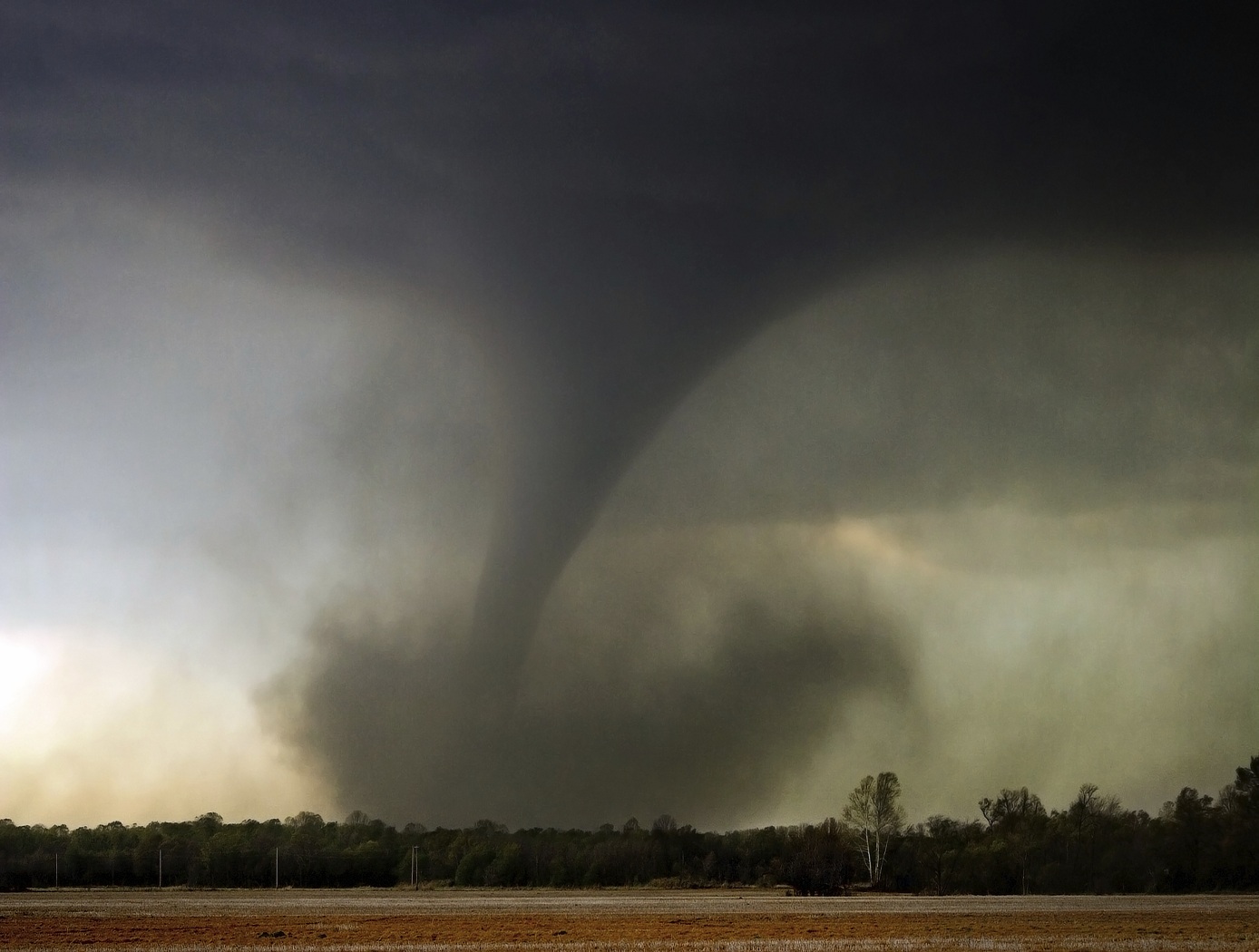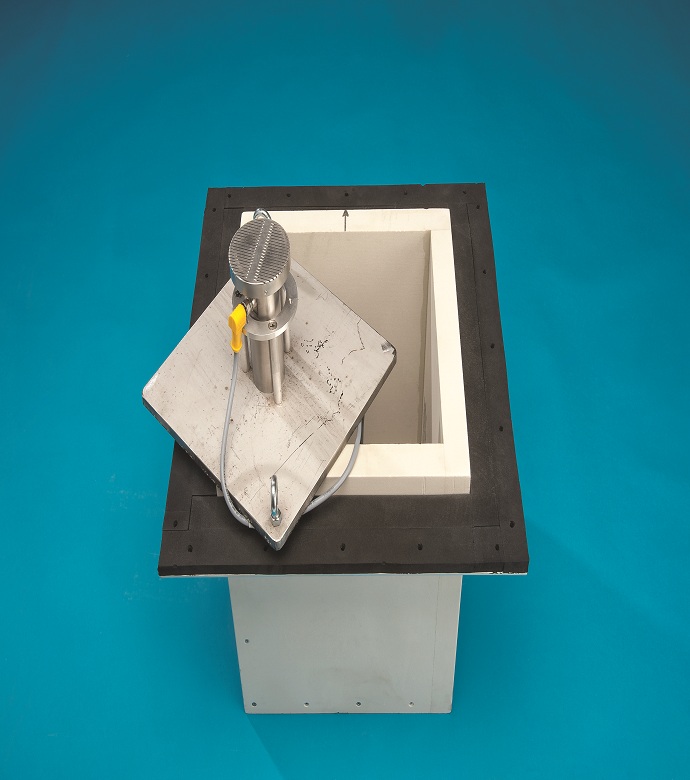Infrasound Sensor Technology
sensors
Infrasound Sensor Technology (LAR-TOPS-106)
An infrasound microphone enables remote detection of aircraft wake vortices, clear air turbulence, tornadoes, and seismic events
Overview
NASA Langley Research Center scientists have developed a microphone that detects infrasound, i.e., acoustic waves ranging from 20 Hz frequencies down to dc. Infrasound is emitted in a number of hazardous atmospheric phenomena, including aircraft wake vortices, clear air turbulence, and tornadoes. It is also emitted by seismic events, such as underground nuclear tests, digging of tunnels, etc. Infrasound propagates hundreds of miles and can penetrate walls, mountains and other obstacles without loss. The NASA infrasound sensor filters out wind noise that can interfere with detection, while using less power and much less space than currently available solutions. As a result, the NASA infrasound sensor can detect tornadoes and clear air turbulence hundreds of miles away; an array of 30 could cover the entire continental US. Aircraft wake vortices can be detected in real time by microphone arrays placed along an airport runway.
The Technology
Large aircraft can generate air vortices in their wake, turbulence that can prove hazardous to aircraft that follow too closely. Because wake vortices are invisible, all takeoffs at busy airports are spaced several minutes apart. This separation gives the vortices time to dissipate, even though they only occur 10% of the time, with resulting loss of operational efficiency. Similarly, clear air turbulence is invisible and can also be hazardous to aircraft. By detecting such disturbances through their infrasound emissions, precautions can be taken to avoid them.
Other phenomena can be detected through infrasound, including tornadoes, helicopters on the other side of mountains, underground nuclear explosions and digging tunnels. Through the unique properties of infrasound, many of these can be detected from hundreds of miles away. NASA's infrasound sensor is a highly refined microphone that is capable of detecting acoustic waves from 20 Hz down to dc, the infrasound range. The design is robust and compact, eliminating the bulk and weight found in other technologies. Where most alternative methods are restricted to certain weather conditions and locations,
the NASA sensor filters noise from wind and other sources, allowing its use under any weather or geographic conditions.


Benefits
- Increases safety through allowing avoidance of wake vortices and clear air turbulence
- Increases airport efficiency by permitting more closely-timed takeoffs when no wake vortex is present
- Allows early detection of tornadoes from hundreds of miles away
- Enables detection of banned underground nuclear tests
- Facilitates detection of underground activity, e.g., tunnel digging
- Works in all weather conditions
- Can be deployed in a compact volume
- Consumes little power, roughly 35 mW
Applications
- Aviation detection of turbulence -- Aircraft wake vortices -- Clear air turbulence detection from hundreds of miles away
- Meteorology - tornado, severe thunderstorm detection
- Defense & Security sensing - previously undetectable or difficult to detect phenomena -- Tunnel digging -- Helicopters, movement of troops and other activity on the other side of mountains, hills -- Detection of personnel inside buildings from outside -- Banned underground nuclear tests
|
Tags:
|
Similar Results

High Altitude UAV for Monitoring Meteorological Parameters
Radiosondes are launched twice a day from different locations of the world and meteorological data is collected to plot the STUV diagram and determining CAPE (Cumulative Average Potential Energy) values. Radiosondes are not re-usable and used only at pre-determined locations around the globe. Moreover, a radiosonde can drift up to 125 miles from its release point. About 75,000 radiosondes are used every year.
Given this unmet need, an inventor at NASA has developed an advanced airborne meteorological system which can provide meteorological parameters at any location at any desired time. In additional to routinely used meteorological sensors, an infrasonic sensor is also included to determine wind shear at local and regional levels. The airborne system may also be used in towns and cities to track drones and UAVs in the area. The airborne vehicle (UAV or drone) should be able to track seismic waves, magnetic storms, magneto-hydrodynamic waves, tornadoes, meteor, and lightning, etc. This technology can be use to measure environmental turbulence including wind shear, vortices as well as large and small eddies is an important factor in forecasting local and regional weather. It can also detect infrasound at ranges of many miles from the source and the shape of the acoustic power spectrum can be used to identify type of turbulence in the atmosphere.

Extreme Low Frequency Hydrophone
The extreme low frequency hydrophone boasts unprecedented capability for precise detection as proven in testing, where it sensed wave range between surface waves and tidal surges with periods between .3 and 30 seconds, or 3 to .033 Hz.
The technology uses a back-electret microphone, inherently reducing noise, in a stainless steel body. The stainless steel diaphragm conducts infrasound well and the materials robust nature and internal configuration facilitates sub-freezing and deeply submerged sensing of sound down to .0001 Hz.
With an appropriately spaced array of three hydrophones it is possible to determine the direction of origin of a submerged infrasonic source, the addition of one more in another location will also enable determination of the precise location of origin.
The oil industry uses existing infrasound systems to locate undersea oil deposits and this technology could potentially improve the accuracy or reliability of current practices. It could also be used to give tsunami and earthquake warnings, monitor ships, and to generate electrical energy from infrasound. This technology has potential to unlock new industry uses not currently understood due to the unprecedented nature of its capabilities.

Low Frequency Portable Acoustic Measurement System
Langley has developed various technologies to enable the portable detection system, including:
- 3-inch electret condenser microphone - unprecedented sensitivity of -45 dB/Hz
- compact nonporous windscreen - suitable for replacing spatially demanding soaker hoses in current use
- infrasonic calibrator for field use - piston phone with a test signal of 110 dB at 14Hz.
- laboratory calibration apparatus - to very low frequencies
- vacuum isolation vessel - sufficiently anechoic to permit measurement of background noise in microphones at frequencies down to a few Hz
- mobile source for reference - a Helmholtz resonator that provides pure tone at 19 Hz
The NASA system uses a three-element array in the field to locate sources of infrasound and their direction. This information has been correlated with PIREPs available in real time via the Internet, with 10 examples of good correlation.

Full Spectrum Infrasonic Stethoscope for Screening Heart, Carotid Artery, and Lung Related Diseases
Microphones and stethoscopes are regularly used by physicians to detect sounds when monitoring physiological conditions. These monitors are coupled directly to a person's body and measure in certain bandwidths either by listening or by recording the signals. The physiological processes such as respiration and cardiac activity are reflected in a different frequency bandwidth from 0.01 Hz to 500 Hz. This technology can monitor physiological conditions in the entire bandwidth range. Signals can also be wirelessly transmitted, using Bluetooth, to other recording devices at any other location.

Adaptive Algorithm and Software for Recognition of Ground-based, Airborne, Underground, and Underwater Low Frequency Events
Acoustical studies of atmospheric events like convective storms, shear-induced turbulence, acoustic gravity waves, microbursts, hurricanes, and clear air turbulence over the last forty-five years have established that these events are strong emitters of infrasound (sound at frequencies below 20 Hz). Over the years, NASA Langley has designed and developed a portable infrasonic detection system which can be used to make useful infrasound measurements at a location where it was not possible previously. The system comprises an electret condenser microphone, and a small, compact windscreen. The system has been modified to be used in the air, underground, as well as underwater (to determine man-made and precursor to tsunami). The system also features a data acquisition system that permits real-time detection, bearing, and signature of a low frequency source. However, to determine bearing of the received signals, the microphones are to be arranged as an equilateral triangle with a certain microphone spacing. The spacing depends upon location of the microphone array. For a ground-based array, the microphone spacing of 100 feet (30.48m) is desired to determine time delay for signals arriving at each microphone location. The microphone spacing depends upon speed of sound through the array medium. For underwater array, the spacing between microphones would be around 1500 feet. The data acquisition system provides data output in the infrasonic bandwidth which is then analyzed using an adaptive algorithm (least-mean-squares time-delay-estimation) using modern computational power to locate source by plotting source location hyperbolas on-line.
A smaller array size reduces the time resolution resulting in strong signal coherence. The innovation approach is to exploit modern signal processing methods, i.e. adaptive filtering, where computer is trained on-line to recognize features of the event to be detected. Modern computational capability permits the adaptive algorithm (least-mean-squares time-delay estimation or LMSTDE) which is vastly more powerful algorithm. This system has better resolution able to determine direction with arrived signals within five-degree accuracy.



